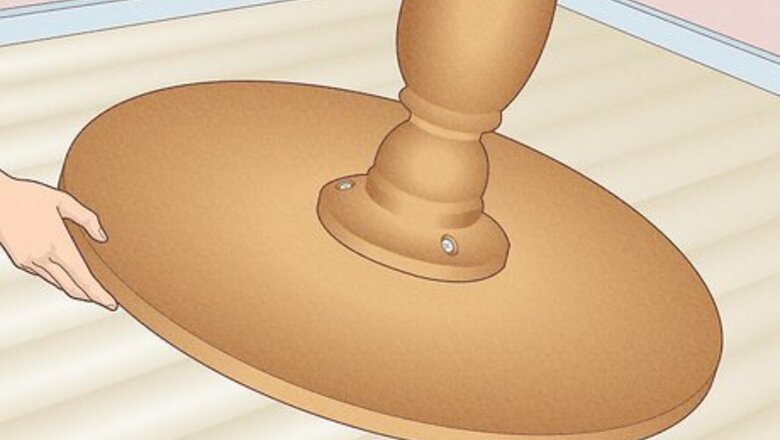
views
Flip the table over.
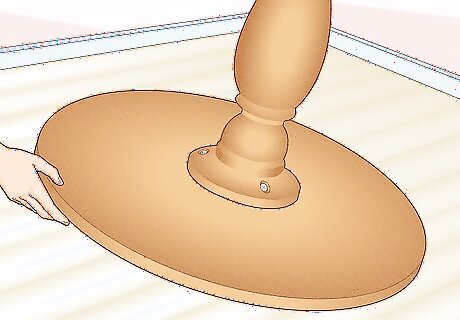
That way, you can access the table top hardware with ease. Carefully pick up the table and turn it over so the table top is resting flat against your work bench. If the table is large or heavy, you can flip it over on the ground.
Find the screws connecting the top to the base.
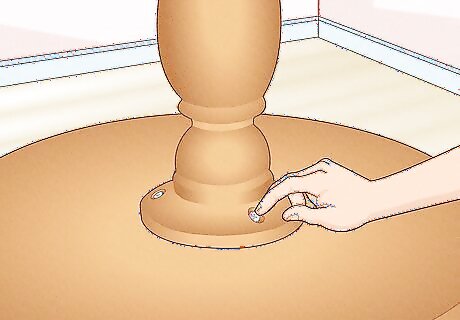
Check the piece connecting the pedestal and the table top. This piece, called the mounting plate, keeps the table bolted or screwed together. Mounting plates can be circular, rectangular, or square. Most pedestal table tops are attached to their pedestals with screws that go through the mounting plate. Your table might have bolts instead of screws, but the principle is the same.
Tighten each screw in the plate.
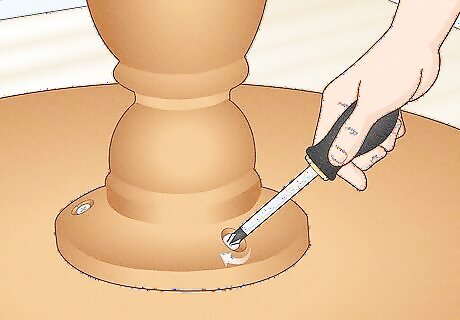
Tighten the screws until they’re flush with the mounting plate. Don’t tighten them any more than that, though! Over-tightening can strip the hardware, cause the screws to snap, and cause cracks in the table top. If your table has bolts instead of screws, use a wrench to tighten them.
Fill holes with wood glue if the screws are still loose.

Screws that fit loosely in their holes have a weak grip. Try taking out each screw and squirting a little wood glue into each screw hole. Then, immediately put the screws back before the glue dries. This can work for leg screws and screws in the mounting plate. Let the glue dry completely before turning the table back over!
Tighten the leg screws if the hardware is visible.

Leg screws aren’t always accessible but if they are, tighten them. If your table has 4 legs instead of a pedestal, the legs probably attach directly to the underside of the table top. If the screws (or bolts) are visible and accessible without removing the legs, simply tighten them with a screwdriver.
Bond wobbly legs to the table top with wood glue.
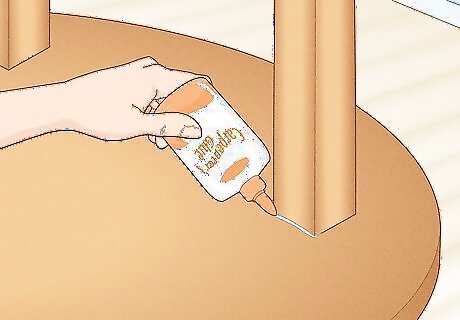
If the leg screws aren’t visible or accessible, try this fix instead. Are there any visible gaps or do the bonds look weak? If so, apply a small amount of strong adhesive (like wood glue) into the gap to bond each leg firmly to the table top. Work on 1 leg at a time and hold the leg steady for a minute or so until the glue dries.
Flip the table back over and test the stability.
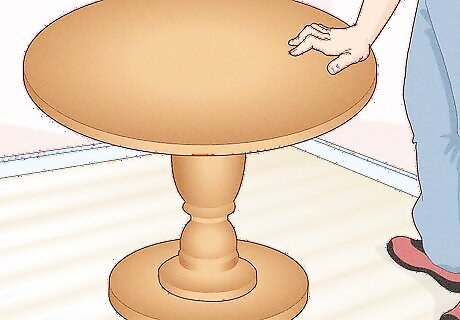
Push down around the edges of the table top to see if it still wobbles. Sometimes, tables wobble because one of the legs is shorter than the others (this can happen due to wear and tear, damage, etc.) If your floor is uneven, one of the legs might seem shorter than the others but in reality, your floor is to blame. A simple level tool can tell you if your floor is uneven or not.
Try rotating a 4-legged table a quarter turn.

Find the sweet spot where all 4 legs make contact with the floor. This may work if you're dealing with an uneven floor. As you’re turning the table, there will be a moment when this happens. It may sound strange, but it's mathematically proven to work. It's quick and free, so there's no harm in trying it! Use a simple level tool to figure out if your floor is uneven or not.
Slip a coaster or rubber wedge under a short leg.
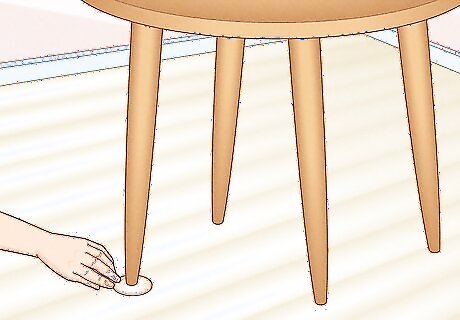
A makeshift shim works in a pinch if you need a quick fix. If you have company coming over and need a fast solution, slide something under the short leg as a shim. Coasters, rubber wedges, cardboard, a matchbook, sugar packets, a wad of napkins—any of these can work in a pinch as long as they are the right height.
Hot glue a cork disc under a short leg.
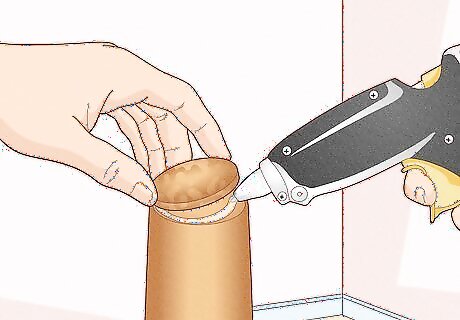
Cut a disc from a cork to the right thickness with a large kitchen knife. Then, just glue it in place to stabilize the leg. If you have a thin slice of wood, self-adhesive felt, a sturdy piece of plastic, or a rubber furniture bumper that’s the right height, you can glue any of that stuff in place as a shim, as well. You can also buy a wooden shim at a hardware store if you’d like.
Extend a leg with a lag bolt or stout screw.
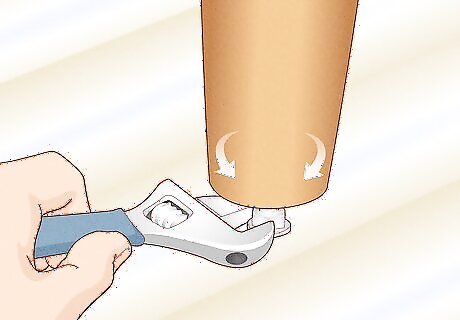
Try this if the table leg is made of wood. Drill a pilot hole directly into the center of the leg. Make sure the hole's diameter is at least as large as the lag bolt or screw you're using. Then, drive the bolt or screw into the hole about halfway. Put the table in it's usual place and turn the screw/bolt in or out to extend the leg until it's the right length. Once the table stabilizes, you're all set. If you're worried about the bolt/screw scratching your floor, add a felt bumper under the bolt head.


















Comments
0 comment